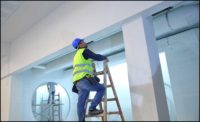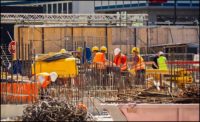Resilience is defined by an industry consortium as the ability to prepare and plan for, absorb, recover from, and more successfully adapt to adverse events. One of the more interesting aspects of the discussions around resilience is the concept of recovering after an event. Typically, in the design phase, we aim to ensure the damage due to an event is limited to some prescribed level or that, under normal operations, the building systems will perform in a certain way. What is not generally considered is the time or cost of recovery. Since designing to have no damage under any conditions is not realistic, to have true resilience in a community, the buildings and infrastructure must be designed to return to functionality for a reasonable cost and within a specified time frame.
Before and after Hurricane Katrina, New Orleans serves as an interesting example. The population of the “Big Easy” in 2000 was 484,674. That dropped by more than 50% in the immediate aftermath of the 2005 hurricane, and, even now, the population has only recovered to about 80% (391,495) of its previous high. A closer look at the data shows the most vulnerable members of the community are also the least likely to have returned. The infrastructure, including homes, offices, industry, etc., was so severely damaged that repair and recovery took an exceedingly long time. During that time, many of those who relocated intended to return, though, once they put down new roots, they weren't in a position or were unwilling to return once the recovery was substantially complete.
Events, such as Katrina, and previous disasters, including the Loma Prieta and Northridge earthquakes, led to the development of the concept of functional recovery. As defined by National Institute of Standards and Technology (NIST) and Federal Emergency Management Agency (FEMA), “Functional recovery is a post-event performance state in which the building is maintained or restored to safely and adequately support the basic intended functions associated with the pre-event use or occupancy.” Although this seems straightforward, the definition of the “basic intended functions” of a building is left open to interpretation.
One answer is that the basic intended functions are all the functionality that was in place before the event. That is, a return to full normal operations. This is certainly true in the longer term, where the building systems are intended get back to 100% functionality. But, is that what is really needed to fulfill the basic mission of the building in the short term? The answer to that question varies greatly depending on the building use and its importance to the owner or community. For example, while we certainly want IAQ to meet current standards, is it acceptable to meet some lower standards for a short period of time while repairs are being planned and implemented? If so, what is that lower standard, and for how long is it acceptable? Questions such as these are not generally addressed by national codes and standards, which typically deal with the functionality for long-term occupancy.
Note that the concept of functionality does not apply only to those events that might cause physical damage to the building or its systems. The heatwave in the Pacific Northwest this past summer is another example where functionality below normal operations might be sufficient to allow buildings to continue to provide their basic functions in light of an event, that is, to be resilient. Most buildings in the affected area were not designed to handle large cooling loads, it just wasn’t typically necessary. But, does failure to be able to cool to 68°F constitute failure? What alternative temperature levels would be acceptable for a short duration? Should this lower level of functionality during extreme events be considered during the design phase? If the answer is that we should include extreme event performance, then guidelines are needed for what is acceptable under those extreme conditions, and the owners should be able to specify how they want their buildings to perform.
Designing, building, and operating buildings to achieve enhanced resilience is possible, but we must be clear about what we mean by resilience. Functional resilience is a way of putting numbers to the performance we want to achieve and thus provides a benchmark against which we can measure our success. However, there is still a lot of work to do regarding exactly what functionality is required in different scenarios and providing guidance to designers and owners on how to realize those ideas. Discussing the concepts is a first step along the road to true resilience.





